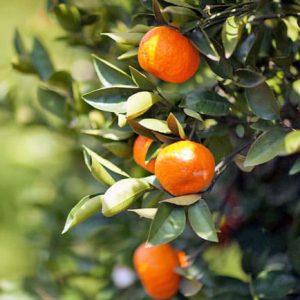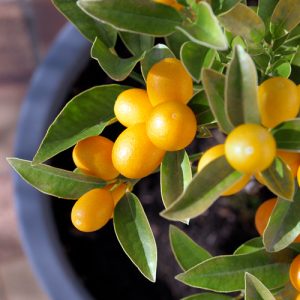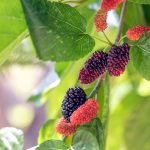There are several fruit trees that are well-adapted to our climate. Choose wisely and you’ll be enjoying the fruits of your labor before you know it.
If you’ve had the privilege of tasting fruit collected with your own hands, you know it’s worth the time and effort of planting a fruit tree.
Of course, being able to enjoy the fruits of your labor depends on a few important factors. You’ll want a citrus tree that suits our climate, flourishing in spring and summer and completing its reproductive cycle before it gets cold around mid-November.
The type and depth of your soil, as well as its nutrients and pH, should be considered before you settle on a particular citrus tree as most prefer well-drained soil and a bright, sunny spot in your landscape.
Although certain citrus fruit trees are cold sensitive and require a bit of care, there are several that are well-adapted to our climate.
 Satsuma (Citrus unshiu) is the most popular citrus in San Antonio and has adapted very well to our climate. Seedless, easy-to-peel fruit and small stature make it a favorite in the home landscape. Common varieties include ‘Miho’, ‘Owari’, ‘Seto’ and brand-new cultivars ‘Orange Frost’ and ‘Arctic Frost’.
Satsuma (Citrus unshiu) is the most popular citrus in San Antonio and has adapted very well to our climate. Seedless, easy-to-peel fruit and small stature make it a favorite in the home landscape. Common varieties include ‘Miho’, ‘Owari’, ‘Seto’ and brand-new cultivars ‘Orange Frost’ and ‘Arctic Frost’.- ChangSha (Citrus reticulate var. satsuma) is a tangerine variety that has been modified to make it more appealing to consumer taste. It produces large quantities of fruit. Originally, the fruits contained many seeds and the tree was very thorny. Newer varieties have fewer seeds and a more upright growth habit.
 Kumquat (Fortunella crassifolia) is ideal for small spaces and produces small fruits with an edible peel that’s sometimes sweeter than the pulp. Unlike true citrus, kumquat typically produces throughout the year and it does very well in containers.
Kumquat (Fortunella crassifolia) is ideal for small spaces and produces small fruits with an edible peel that’s sometimes sweeter than the pulp. Unlike true citrus, kumquat typically produces throughout the year and it does very well in containers.
In recent years, other citrus trees such as Mexican lime (Citrus aurantifolia), Meyer’s improved lemon (Citrus x meyeri ‘Improved’), grapefruit (Citrus x paradise), navel orange and Valencia orange have increased in popularity in San Antonio. But be careful with these varieties as cold temperatures can do a lot of damage.
In fact, most of these citrus trees did not survive winter storm Uri. It’s important to offer these plants plenty of protection when the weather cools dramatically.




